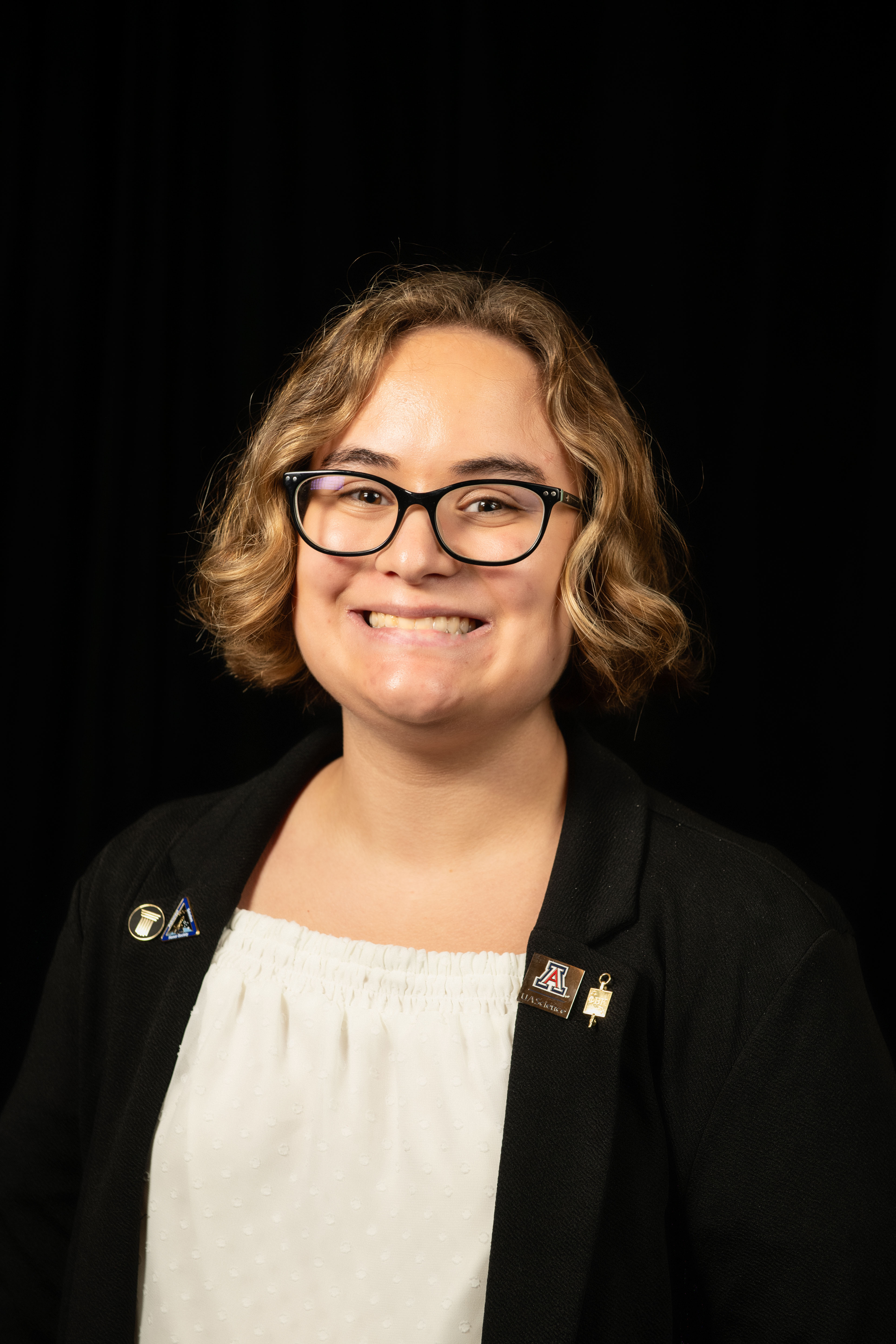About Me

Education: I'm currently a Ph.D. Student in Physics with an Astrophysics Concentration at the University of New Mexico, and a New Mexico Space Grant Graduate Research Fellow. I completed my Bachelor of Science in Astronomy and Bachelor of Science in Physics at the University of Arizona, with Honors in Astronomy, in May 2024.
Research Interests: My two main research interests are exoplanets and astronomy education/science literacy. See the Research page for more details on my past and current research!
Hobbies and Other Interests: When I'm not in classes or working on research, I enjoy playing percussion, reading, curling (yes, the Olympic sport everyone loves), and crocheting!
Research

Publications: See my ADS link here and Google Scholar link here!
Selected posters and presentations are linked in my CV!
Analyzing JWST Observations of the Exoplanet LTT 9779b
My pre-candidacy project at the University of New Mexico is leading the analysis of transmission spectrum data from the NIRSpec instrument on JWST to learn more about the atmosphere of this exoplanet that's part of the hot Neptune desert. I am currently working on a first-author paper to be published soon.
Characterizing Post-Habitable Exoplanets with Habitable Worlds Observatory
The under-development Habitable Worlds Observatory (HWO) mission aims to directly image exoplanets. My project at the University of Arizona's Lunar and Planetary Laboratory involved developing atmospheric retrieval models to see what sorts of spectral data we would need from this mission to determine if an imaged planet is a Venus-like exoplanet.
Compositional Links Between Rocky Exoplanets and their Host Stars
In the Summer of 2022, I did research through a National Science Foundation Research Experience for Undergraduates at the University of New Mexico. I calculated iron-to-silicate mass fractions for stars and planets starting from stellar spectra. The trend I found between the compositions was weaker than past trends, and others now confirm this weaker trend.
Analyzing Student Reasoning in Astrobiology MOOC Writing
This was my Honors Thesis in Astronomy, earning me Honors from the W.A. Franke Honors College at the University of Arizona. I compared student writing assignments with experts to determine what reasoning students tended to use.
Scalable Grading of Student Writing in MOOCs
Within Massive Open Online Courses, grading assignments is hard to scale, and is currently done by peers. However, peer grading is unreliable when compared to instructor grading. This project took responses from our MOOC writing assignments and compared the grades the assignments received from instructors, peers, and the grades given by Large Language Models. A paper on this work is published here in the International Journal of Artificial Intelligence in Education (or on arXiv here.) We expanded this work to compare the feedback that instructors, peers, and LLMs give on student responses.
Combating Science Misinformation Online
This project was partially funded by an Arizona/NASA Space Grant in 2021-2022. I read hundreds of articles on ten pseudoscience topics, classifying them as real or fake science and looking for claim-evidence pairs within these articles. We also worked on using Large Language Models to determine whether an article is real or fake science, and what topic it is part of.
Outreach

Teaching: In the Spring of 2026, I will be a TA for the Physics of Music lecture. From the Fall of 2024 through the Fall of 2025, I was a TA for the Introductory Astronomy Lab (ASTR 1115L) at UNM. I aim to foster an approachable and supportive classroom environment where students feel comfortable asking questions and engaging with challenging material. Evaluations from my students consistently highlight my patience, clarity, and willingness to walk through concepts step-by-step, as well as my prompt feedback and emphasis on interactive, hands-on learning.
Outreach: At UNM, I am a Volunteer Telescope Operator for some of the Campus Observatory's Friday night open houses. I have also judged high school and undergraduate research projects, and given outreach talks to local elementary students and at Space Center Houston during this past year. While at UofA, I worked as a Planetarium Operator and Science Center Interpreter at the Flandrau Science Center and Planetarium, the only planetarium in Southern Arizona. I also volunteered as a NASA Partner Eclipse Ambassador to increase awareness for the October 2023 and April 2024 solar eclipses.
Diversity, Equity, & Inclusion: I've been involved in leadership roles in our Physics and Astronomy Graduate Student Association and Women in Physics, Astronomy, and Optics. I am the current GSA Communications Officer and Secretary, and Chief of Communications and Web for WiPAO. I served during my first year as GSA Web Technology Officer and a representative to the university-wide Graduate and Professional Student Association. For my final two years at UofA, I was a peer leader for the TIMESTEP program, sitting on panels to share my experiences and promote diversity and inclusion in astrophysics.
Contact
Email: sstamer@unm.edu



